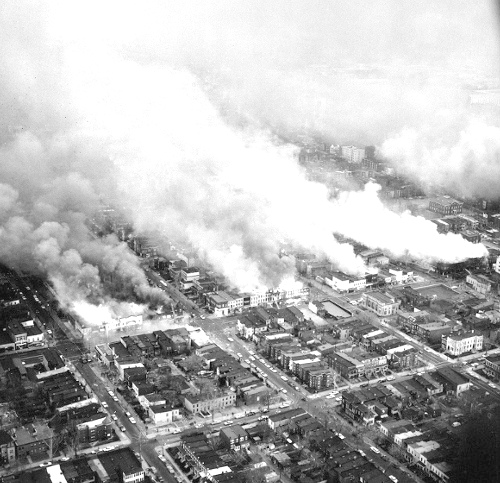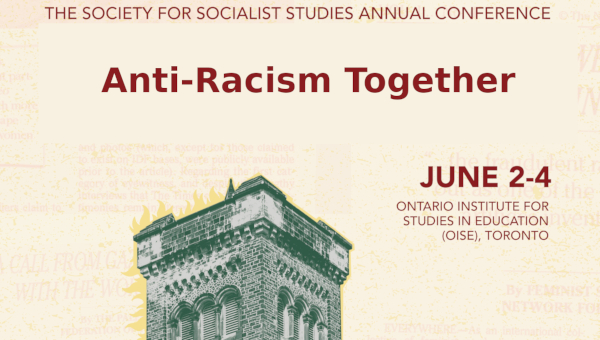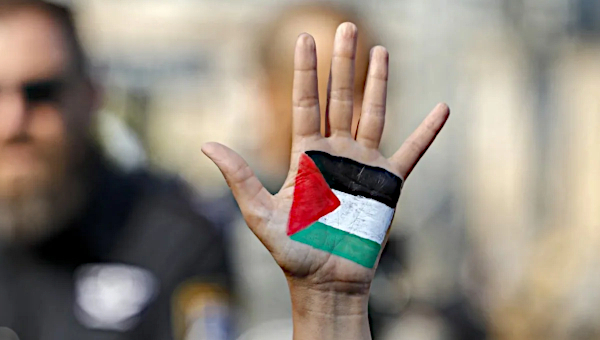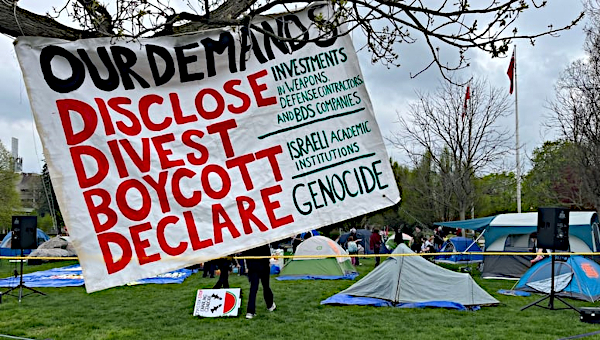Protests, riots and police violence in Ferguson (a suburb of St. Louis), Missouri, last August have laid bare “America’s racial rift” says The Guardian Weekly.[1] Mainstream opinion-makers have tended to interpret the Michael Brown case and the protests that followed his death in terms of police brutality, racial tensions, and legal responsibility (of the shooting of unarmed 18-year-old African American, Michael Brown), showing these events as specific to American society. Their significance is however much broader. To capture this broader picture, one has to adopt a method of thinking which does not view Ferguson only empirically. Thinking these events as constituent parts, or outcomes, of a social and economic system is a necessary undertaking to those committed to social justice and emancipation. Such method of thought makes Malcolm X a contemporary of our problems even though his life and work were those of a Black nationalist of the 1960s.

Past and Present Segregation
Hence the question: why? Because of “white flight” out of the neighborhood. It has transformed it from a majority-white into a majority-black district in the space of the last decade. Moreover, this land of the “other” is the byproduct of the class divide within the city: Delmar Boulevard has become in the context of deepening class inequalities in St. Louis the dividing line between the north of the city, poor, working-class and Black (98 per cent Black, median income of $18,000), and the middle-class south (73 per cent white, median income of $50,000).[3]
Moreover, the military buildup that we have witnessed in face of the protests in Ferguson shares something colonial about it: white police officers using military might – armored vehicles, sniper nests, tear gas, state of emergency declared with a curfew between midnight and 5am – to cow black crowds of protesters. Bengali Subaltern Studies historian Ranajit Guha expressed the relation to authority and power in colonial India between the British rulers and the indigenous masses as being “dominance without hegemony”: a domination based on sheer force and coercion, with no hint of legitimacy whatsoever. This is all the more reinforced by the race-class divide of the city. In his classic 1961 study, The Wretched of the Earth, Frantz Fanon underlined that the colonial city was profoundly Manichean: the natives locked up in overcrowded slums facing the modern European district, military barracks and police offices providing the demarcation between both.[4]
Perhaps, but St. Louis is not Algiers. The difference lies in the civil-rights movement of the 1960s which has abolished the Jim Crow system that was synonymous with racial barriers instituted through law and administrative practices of the state apparatus. The Civil Rights Act of 1964 established formal equality between citizens, putting an end to institutionalized racial discrimination in southern American states, in the same manner that independence has put an end to colonialism between 1945 and the seventies. Were we to use the words of academia, we could say that Ferguson is a postcolonial conflict, that is a conflict shaped by the legacy of a colonial and racist past that is now entangled in the inner workings of capitalist society.
How can Ferguson be put in historical perspective? One possible way to do so is to imagine a scenario grounded in historical facts: Malcolm X (1925-1965) in face of the protests and riots in Ferguson. Such method seems at first hand profoundly fictional and irrespective of the fundamentals in history. In fact, such a procedure allows comparison – undeniably a central operation
in social sciences.[5]
The Capitalist Roots of Racism: Then and Now
Malcolm X’s thought and action represent a radical path within the Black liberation movement of the fifties and sixties when the pillars of the oppression of African-Americans were shaken through mass political actions.[6] Such mass movement is clearly not part of the picture today in the United States even if radical politics, as the Occupy movement testifies, registered new developments lately. But, in both cases, then as now, oppression remains the predominant feature of the African-American condition. Putting in relation Malcolm X (1964-65) with Ferguson (2014) thus allows one to bypass the lack of a mass Black liberation movement today in the understanding of the August events in St. Louis.
In that sense, three points can be stressed. First, segregation today – the key issue embedded in the Ferguson events – shares a postcolonial character, in the same manner that it was depicted by Malcolm X in 1964:
“A segregated district or community is a community in which people live, but outsiders control the politics and the economy of that community. They never refer to the white section as a segregated community. It’s the all-Negro section that’s a segregated community. Why? The white man controls his own school, his own bank, his own economy, his own politics, his own everything, his own community; but he also controls yours. When you’re under someone else’s control, you’re segregated. They’ll always give you the lowest or the worst that there is to offer, but it doesn’t mean you’re segregated just because you have your own. You’ve got to control your own. Just like the white man has control of his, you need to control yours.”[7]
In his “Ballot or bullet” speech he underlines that segregation does not only designate race barriers and discrimination inherited from slavery and its cultural legacy within American society. Segregation means above all dispossession and exploitation. It is shown in this speech in the combined form which was taking shape in the urban centers of the industrial North at the beginning of the sixties. In these cities, segregation in 1964 had the same roots as today: a legacy of racism and discrimination, as well as the workings of capitalist market economics, especially in housing, real estate and education.
Hence, then as now, the fundamental issue in the condition of Blacks is not really formal equal rights for all citizens. It is the second point. Equal rights can only be a step forward: the end of racist discrimination in housing, in education, in jobs, in relations between police officers and local communities, etc., would undoubtedly improve the condition of African-Americans and, more broadly, would raise American society as a whole, in the same manner that the Civil Rights Act did in 1964. But such formal equal rights could not serve as a measure for the emancipation of African-Americans. In his radical commitment to speak the truth in the name of the voiceless, Malcolm X was calling such equality “tokenism”.
“Kennedy’s new approach was pretending to go along with us in our struggle for civil rights and different other forms of rights. (…) So in my conclusion I would like to point out that the approach that was used by the administration right up until today was designed skilfully to make it appear they were trying to solve the problem when they actually weren’t. They would deal with the conditions, but never the cause. They only gave us tokenism. Tokenism benefits only a few. It never benefits the masses, and the masses are the ones who have the problem, not the few. (…) The masses of our people still have bad housing, bad schooling and inferior jobs, jobs that don’t compensate with sufficient salaries for them to carry on their life in this world. So that the problem for the masses has gone absolutely unsolved. The only ones for whom it has been solved are people like Whitney Young, who is supposed to be placed in the cabinet, so the rumor says. He’ll be the first black cabinet man. And that answers where he’s at. And others have been given jobs, like Carl Rowan, who was put over the USIA, and is very skillfully trying to make Africans think that the problem of black men in this country is all solved.”[8]
Today, it would simply be wrong to view the African-Americans as a marginalized group of American society. Whether one looks at the field of American culture, the state apparatus or the corporate world, African-Americans can be noticed, occupying key positions and playing key roles. Paradoxically, statistics show that the condition of the mass of African-Americans bear the marks of discrimination and oppression. Police brutality such as the Michael Brown case – or Rodney King (1992) – are part of a wider picture of lower life expectancy, unequal access to higher education and culture, day-to-day discrimination in housing and employment, not to mention discrimination in the law courts and prisons of the country.
Therefore, when Malcolm X asserts in 1964 that civil rights do not solve “the problem for the masses”, he offers an outlook that seems contemporary to us – third point. Taking the condition of the masses as one’s starting point leads to radically different conclusions and strategies in politics. Indeed, the logical conclusion of such a stand is to embed the anti-racist struggle into socialist politics. Malcolm X’s sympathy for socialism is unquestionable during his last year (1964-65):
“As was stated earlier, all of the countries that are emerging today from under the shackles of colonialism are turning toward socialism. I don’t think it’s an accident. Most of the countries that were colonial powers were capitalist countries, and the last bulwark of capitalism today is America. It’s impossible for a white person to believe in capitalism and not believe in racism. You can’t have capitalism without racism.”[9]
If many liberal voices have condemned the killing of Michael Brown and the repression of protesters in Ferguson, criticized biased media coverage and pleaded in favor of reforms in the police departments throughout the country, no voice has been heard conveying such a systematic condemnation of the social relations that breed violence, hatred and oppression. Such a difference explains why massive riots and protests in our epoch haven’t led – as in the sixties – to political shifts and progress for the subaltern classes. At last, “You can’t have capitalism without racism” underlines to what extent the events in Ferguson – as well as Malcolm X – have global echoes today: the London riots in 2011 and the 2005 riots in the poor suburbs of France unquestionably demonstrate it. •





